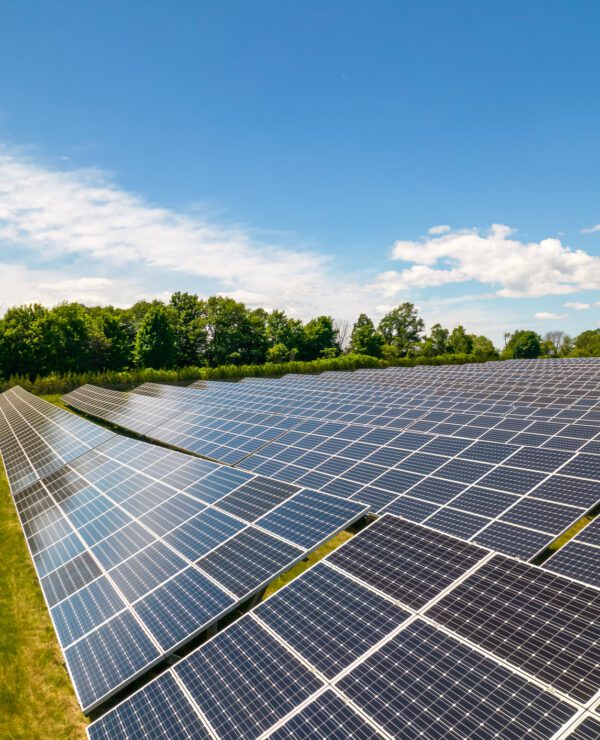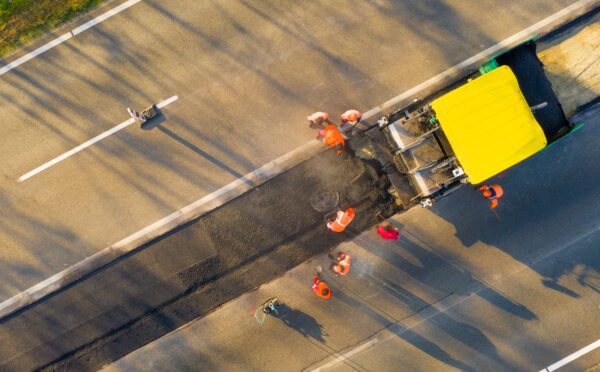Authors
Partner, Commercial, Toronto
Partner, Energy and Construction, Calgary
Partner, Corporate, Montréal
Partner, Emerging and High Growth Companies, Montréal
Associate, Financial Services, Montréal
Associate, Corporate, Calgary
On April 3, 2024, the BC Hydro and Power Authority (BC Hydro) issued a request for proposals (RFP) entitled BC Hydro Call for Power 2024 (BC RFP) to acquire approximately 3,000 gigawatt hours per year of electricity, BC Hydro’s first competitive call for power in 15 years. The BC RFP targets to add 5% to the current supply, enough to power 270,000 homes or one million electric vehicles per year. Currently, 25% of BC Hydro’s energy supply comes from 125 electricity purchase agreements with independent power producers.[1] The BC RFP process follows a June 2023 announcement of a call for renewable, emission-free electricity from large-scale projects (the Call).
BC Hydro collaborated with the First Nations Energy and Mining Council in designing the Call, the BC RFP and a scheduled specimen electricity purchase agreement (EPA). The Call, the BC RFP and the EPA mandate equity ownership in the project of at least 25% on a pass-fail basis by one or more First Nations whose attributed territory encompasses the project (as set out on the public website, iMapBC, administered by the Province of British Columbia). Such minimum First Nations equity ownership must be maintained until the third anniversary of the project’s commercial operation date.
Overview of BC’s RFP process
The Call’s stated objectives include affordability of electricity, a reliable power system to match British Columbia’s growth, reconciliation with First Nations and clean and efficient electrification.
The proposal submission deadline is September 26, 2024, and the Competitive Electricity Acquisition Interconnection Request (CEAP IR) pre-submission deadline was April 19, 2024. The submission date for deposits for the CEAP IR totaling $30,000 is May 21, 2024. The proposal fee for submission of a proposal into the RFP is $13,000 and the bid security required to be provided with the proposal as security for entering into the EPA is $25,000 per megawatt of the proposed plant capacity.
The BC RFP requires participants to base projects in British Columbia, generate new, incremental energy from a clean or renewable, proven resource with a minimum plant nameplate capacity of 40 megawatts but less than 200 megawatts. The project must achieve commercial operation between October 1, 2028, and October 1, 2031. The EPA contemplates liquidated damages for a failure to meet this commercial operation timeline. The evaluation criteria blends a quantitative evaluation (balancing general costs such as network upgrading or transmission of energy with benefits such as the supply of energy) with a qualitative assessment of the adequacy of First Nations consultation and involvement. BC Hydro will evaluate the proposals to identify which are the most advantageous to BC Hydro, based on the assessment of the evaluation criteria.
The EPA that accompanies the BC RFP contains standard commercial terms found in similar power purchase or electricity purchase agreements offered by other power authorities in Canada.
Indigenous participation
BC Hydro’s United Nations Declaration on the Rights of Indigenous Peoples Implementation Plan informs the power authority’s objective to facilitate an economic participation model by which the BC RFP might create meaningful economic benefits to First Nations. The economic participation model awards evaluation credits through three factors:
- “Project First Nations” (being First Nations in whose territory the project is located) equity ownership of each project must be a minimum 25% (pass fail assessment)
- evaluation credits exist that acknowledge Project First Nations equity ownership in excess of the minimum 25% up to a maximum of 51%
- non-equity economic benefits accruing to Project First Nations under a proposal
Project First Nation’s equity ownership in projects is intended to be financeable. The Canada Infrastructure Bank may finance up to 90% of a First Nation’s equity position in a project. To backstop a First Nation’s equity investment, the BC RFP mandates that the First Nation equity ownership must remain above 25% until at least the third anniversary of the project’s commercial operation date or else BC Hydro may terminate the EPA or reduce the price BC Hydro pays for energy under the EPA.
Sharing the Crown’s duty to consult with proponents
As part of the BC RFP process, project proponents must provide evidence of the economic participation of and consultation with one or more First Nations that the project potentially impacts. Factors that BC Hydro will employ to assess adequate consultation consider the chronology and timing of meetings, funding to the First Nation to support consultation capacity, descriptions of the project and its impacts, an outline of impacts on Aboriginal rights and title and, among other things, a description of agreements entered into with First Nations respecting consultation. These requirements accord with paragraph 35 of the Supreme Court of Canada’s ruling in Rio Tinto Alcan v Carrier Sekani Tribal Council, 2010 SCC 43, that a duty to consult arises “when the Crown has knowledge, real or constructive, of the potential existence of the Aboriginal right or title and contemplates conduct that might adversely affect it.”
The EPA expressly grants BC Hydro the right to invoke force majeure and suspend its obligations to the project proponent where BC Hydro, as the Crown, is held to be in breach of its duty to consult or accommodate First Nations in relation to the project. As such, BC Hydro can require the proponent to fulfil BC Hydro’s duty to consult and accommodate by leveraging force majeure as a contractual mechanism which grants BC Hydro relief from its obligation to pay for energy the proponent delivers. The force majeure provision expressly obligates the proponent to assume the responsibility of and assist BC Hydro in the otherwise common law duty of the Crown to consult First Nations possibly affected by any project in connection with the BC RFP.
Indigenous participation in renewable energy procurements across Canada
Indigenous ownership is also mandated under Saskatchewan’s Solar Generation Power Purchase Agreement between SaskPower and the supplier (SK PPA) which forms part of the SaskPower request for proposals dated February 15, 2024, and for which proposals were due on April 25, 2024, as well as under its recently closed (but not yet awarded) RFP for up to two, 200-megawatt wind-power generating facilities in south-central Saskatchewan. The SK PPA mandates a minimum 10% First Nation equity ownership of a project for its entire supply period. The SK PPA further mandates that a minimum 30% of a proponent’s board of directors or equivalent (e.g., a management committee or general partner, the effective governance authority for the project) must be composed of Indigenous individuals. While not utilizing a force majeure mechanism to secure Indigenous participation, the SK PPA would operate similarly to the EPA in response to a breach of Indigenous participation related provisions.
Ontario is also actively incentivising Indigenous community participation in the electricity resource projects it is procuring. Ontario’s December 2023 Resource Adequacy Update signaled ongoing and periodic long-term competitive procurements to meet the province’s growing energy demand. The Resource Adequacy Update confirms that Ontario’s Independent Electricity System Operator will seek purposeful and regular engagements with Indigenous communities in connection with new projects (including energy storage projects and renewable energy generation facilities).
As part of Ontario’s recent Expedited Long-Term 1 (E-LT1) RFP and Long-Term 1 (LT1) RFP, a proposal’s competitiveness stood to benefit from optional “Rated Criteria”. Certain of the Rated Criteria points for these procurements were based on equity participation by Indigenous communities in the proponent, with additional Rated Criteria points for equity participation by Indigenous communities in whose traditional territory the project site is located.[2] However, the optional Indigenous participation criterion exists even where projects are located entirely on private, non-Crown land. Rated Criteria in the Ontario processes allow a proponent to strengthen its bid through the application of an “evaluated proposal price” for purposes of ranking advantage in the awarding of contracts, though that does not impact the pricing paid over the life of the agreement. Under these Ontario long-term agreements, the equity participation level of the Indigenous community must be maintained until the fifth anniversary of the project’s commercial operation date (but may be reduced to a minimum of 10% during that period on the request of the applicable Indigenous community equity holder).
Hydro Québec has lately launched several tender calls for electricity generated from renewable energy to meet the long-term electricity needs of its Québec customers. The most recent one is an important tender call launched on March 31, 2023, for 1,500 megawatts of electricity generated from wind power.
In the Québec RFP, 16 of 100 RFP points were allocated to Indigenous economic benefits including
- up to two points for prior consultation with Indigenous communities potentially affected by a project in accordance with published consultation principles as outlined by an inter-ministerial effort that the Secretariat for Indigenous Affairs coordinated[3]
- up to five points awarded for direct Indigenous participation in the project by potentially affected communities
- up to three points for written agreements evidencing a commitment to the provision of economic benefits to potentially affected Indigenous communities including contracts to Indigenous businesses, jobs for Indigenous persons and associated workforce training programs, investment in Indigenous community infrastructure and other forms of payment
- up to six points for participation of the local community which administers the territory where the project is located (including, if applicable, Indigenous communities) through up to 50% in voting rights
The remainder of the RFP points were reserved for other factors including up to 60 points reserved for costs. The terms of the Hydro Québec RFP process vary from one call tender to another.
The Government of Québec also announced on March 26, 2024, that it would reserve a block of 300 megawatts of solar energy for an upcoming RFP by Hydro Québec.[4] Currently, a draft order-in-council in the Gazette officielle du Québec contemplates that 100 megawatts be connected to the Hydro Québec network by December 31, 2029, and 200 megawatts by December 31, 2032.
Future of Indigenous participation in large-scale energy projects
Where the British Columbia and Saskatchewan approach is to mandate Indigenous equity participation and, in the case of the SK PPA, minimum governance representation in respect of the project, contractually, Québec and Ontario’s approach to date has been to economically incentivise involvement of Indigenous communities by tying involvement to the competitiveness of a proponent’s economic bid in the procurement evaluation process. Indigenous participation in the energy transition is a key area of focus across the Canadian economy and appears poised to remain a key feature of provincial and territorial procurements of clean energy and energy transition assets for the foreseeable future.
[1] “BC Hydro issues call for new clean electricity to power B.C.’s future,” April 3, 2024.
[2] IESO, “Resource Acquisition and Contracts – Long-Term 1 RFP and Expedited Process.”
[3] “Document d’information à l’intention des promoteurs et introduction générale aux relations avec les communautés autochtones dans le cadre de projets de mise en valeur des ressources naturelles” [PDF], Government of Québec; “Guide sur la démarche d’information et de consultation réalisée auprès des communautés autochtones par l’initiateur d’un projet assujetti à la procédure d’évaluation et d’examen des impacts sur l’environnement” [PDF], Government of Québec.
[4] Hydro-Québec, “Hydro-Québec retains 8 bids totalling 1 550 MW of wind power,” January 26, 2024.


